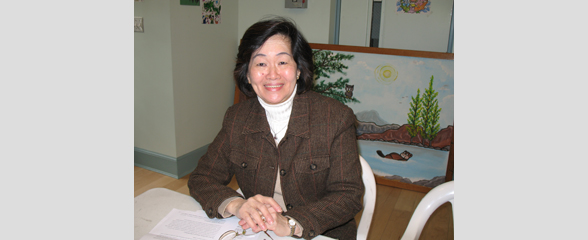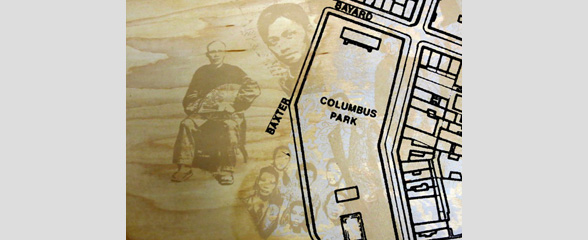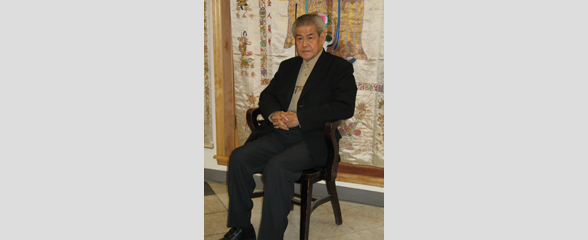Labor unions

2008.040.025 Oral History Interview with Connie Ling February 12, 2008
Connie Ling, born in the Philippines and later a resident of Hong Kong during the 1960s, summarizes her experiences emigrating with her husband from Hong Kong to New York in 1967. Ling initially lived and worked in Chinatown, where she found employment as a machine operator in a garment factory. During her ten years working for the garment industry, Ling recalls an influx of Chinese immigrants and substantial growth in industrial businesses. After serving as a factory chairwoman for several years, she was eventually recruited as a union representative for UNITE in 1982, speaking for workers rights and mediating conflicts between workers and employers. At the time of her interview, Ling estimated that there were only approximately 100 union garment factories left. She attributes this decrease to the aftermath of September 11th, which caused commercial rent to double and garment industries to outsource labor to Sri Lanka, Mexico, and China. Ling also talks about the gentrification in Chinatown, stating that new condominiums are replacing old shops and factories while rent inflation is forcing old residents to move out of Chinatown. She goes on to note the growth among the Fukienese and Puerto Rican immigrant populations in the Lower East Side and expresses discontent with the growing number of Caucasian residents in Chinatown. Ling concludes by reflecting on how Chinatown’s garment industry is not likely to return due to significant changes in manufacturing and rent.

2008.040.026 Oral History Interview with Lana Cheung February 25, 2008
Lana Cheung emigrated with her husband from Hong Kong to the United States in 1987. Shortly after her arrival to New York, she remembers being initially surprised by the differences between Chinatown and Hong Kong, particularly in the contrasting architecture and combined residential and commercial areas. Cheung considers Chinatown a safe harbor for Chinese immigrants, where they had a sense of security and could speak their native language.
Cheung was employed by a Jewish import company, and later as a union agent for the garment workers union, UNITE (which had a Chinatown office starting in 1998). As a union representative, Cheung provides an insider perspective of the garment factory working conditions, which affected mostly Chinese immigrant women who endured long hours, hard labor, and the burden of sustaining their families. She notes that the garment factories also functioned as a place for women to communicate and socialize with each other, a detail that is often overlooked in historical accounts of garment factory working conditions.
Following September 11th, however, the garment industry slowed down and many of the garment factories were replaced by condominiums. While Cheung hopes that at least one garment facility will be preserved in memory of Chinatown’s industrial history, she otherwise welcomes the new developments and hopes that the younger and energetic generations will be a positive and reviving influence on community. Along these same lines, she acknowledges some current positive changes in sanitation, tourism, and efforts to ensure that Chinese culture and language are preserved in succeeding generations.

2008.040.027 Oral History Interview with Sing Kong Wong February 8, 2008
After being petitioned by his wifes family, Sing Kong Wong, a former administrator for a government agency in China, immigrated to New York in 1980 where he worked as a presser in a garment factory. Wong illustrates the poor working conditions in the garment factories, commenting on the lack of sanitation, violations of workers rights, and inadequate benefits and welfare. He explains how the steady decline in the garment industry has been especially problematic for immigrant populations, as they are unable to find other jobs and have limited financial means to pay the rising rent. Wong believes that the decline in garment factories began with the U.S. legislation that permitted jobs to be outsourced to Mexico, China, and India. After the events of September 11th, the situation worsened as landlords demanded higher rent and as zoning changed residential areas to commercial and business spaces.
Wong mentions that as a way to remember his past life and to share important life lessons with future generations, he has photographed personal and historically significant subjects and occurrences relevant to his life and experiences. Such subjects include the harsh conditions in garment factories, life in Chinatown, and the events of September 11th. He continues to describe the changes in Chinatown occurring over the past thirty years, like the improving tolerance and relationships between ethnic and provincial groups and the greater appreciation for Chinese culture and traditions.
Finally, Wong elaborates on his views regarding gentrification, worrying that people with lower-incomes will suffer the consequences of uncontrolled rent prices, eviction, real estate development, and a poor job market. He suggests that the government should be more involved in maintaining the parks, providing more recreational programs for the community, and fixing local traffic problems. Wong asserts that progressive and proportionate improvements are necessary, but these improvements must serve all residents and not just the wealthy.